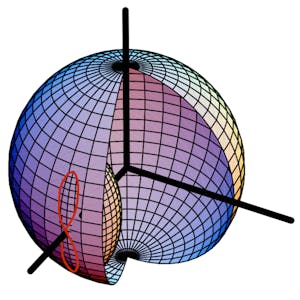Kinematics: Describing the Motions of Spacecraft
About this Course
The movement of bodies in space (like spacecraft, satellites, and space stations) must be predicted and controlled with precision in order to ensure safety and efficacy. Kinematics is a field that develops descriptions and predictions of the motion of these bodies in 3D space. This course in Kinematics covers four major topic areas: an introduction to particle kinematics, a deep dive into rigid body kinematics in two parts (starting with classic descriptions of motion using the directional cosine matrix and Euler angles, and concluding with a review of modern descriptors like quaternions and Classical and Modified Rodrigues parameters). The course ends with a look at static attitude determination, using modern algorithms to predict and execute relative orientations of bodies in space. After this course, you will be able to... * Differentiate a vector as seen by another rotating frame and derive frame dependent velocity and acceleration vectors * Apply the Transport Theorem to solve kinematic particle problems and translate between various sets of attitude descriptions * Add and subtract relative attitude descriptions and integrate those descriptions numerically to predict orientations over time * Derive the fundamental attitude coordinate properties of rigid bodies and determine attitude from a series of heading measurements The material covered is taking from the book \"Analytical Mechanics of Space Systems\" available atCreated by: University of Colorado Boulder

Related Online Courses
In this project-based course, you\'ll step into the role of a developer using Cody, an AI-enhanced coding assistant, to refine and advance an open-source software project. You\'ll get hands-on with... more
This Specialization is intended for IT professionals who want to learn the fundamentals of database concepts in a cloud environment, get basic skilling in cloud data services, and build their... more
If you\'re ready to hone your leadership skills and grow as a person, Strategic Leadership: Impact, Change, and Decision-Making for Work and Life is designed for you, whether you\'re a manager or... more
Today, OLAY is committed to advancing STEM fields and Skin Care education. This Cosmetic Science course is designed to educate and upskill on skin care fundamentals to and help more people enter... more
The \"Construction Techniques and Practices\" specialization equips learners with essential construction knowledge and skills for industry readiness. It comprehensively covers formwork engineering,... more








